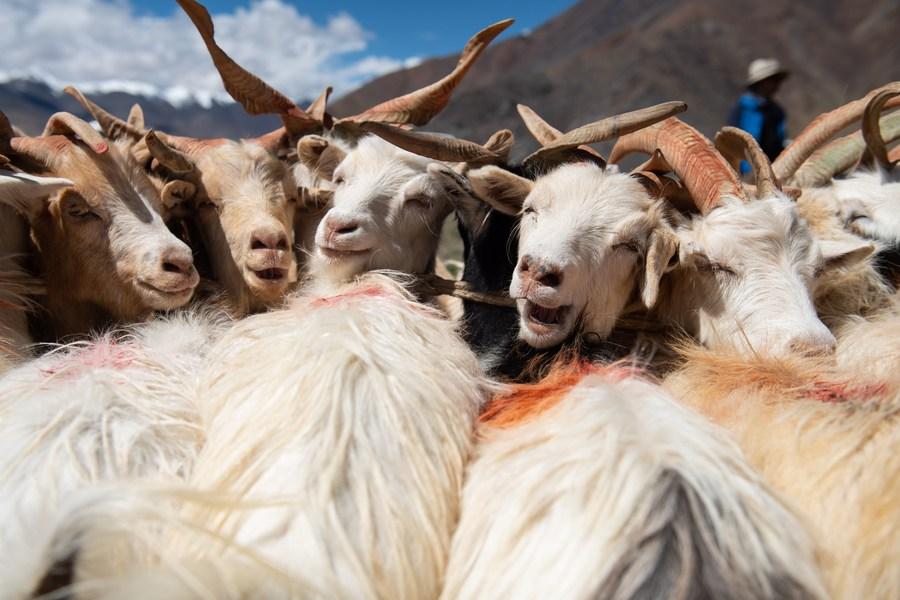Source:Xinhua 2023-04-03

Sheep are seen in Rutog County of Ngari Prefecture, southwest China's Tibet Autonomous Region, Aug. 4, 2019. (Xinhua/Jigme Dorje)
LHASA, Feb. 19 (Xinhua) -- Chinese researchers have discovered more than 3,000 years old milk residue at an archaeological site in Namling County of Xigaze City, Tibet Autonomous Region, indicating that milk was consumed by local people millennia ago.
The research, jointly conducted by the Institute of Tibetan Plateau Research (ITP) of the Chinese Academy of Sciences, Lanzhou University, the Cultural Relics Conservation Institute of the Tibet Autonomous Region, and other institutes, was published in the journal Science Bulletin.
According to the study, to compensate for energy loss and oxidative stress, the Tibetan people have developed unique dietary traditions that are different from the plain areas. Meat products such as beef and mutton are common food on the Tibetan Plateau, providing abundant proteins and fats for the human body to maintain its metabolism.
Dairy food from cattle and goats can relieve the hardening of arteries caused by excessive meat consumption and replenish antioxidants, probiotics, and various nutrients, it noted.
The research pointed out that in prehistoric times, dairy products could have been the daily food of the pastoral communities on the Tibetan Plateau.
"However, no direct evidence of dairy products during prehistoric times has yet been found in the high-elevation areas of the Tibetan Plateau, except for some clues from visible food remains," it said.
The latest discovery was made at the Gongthang Ruin site, which is located 4,000 meters above sea level on the left bank of one of the tributaries of the Yarlung Zangbo River.
The dating results of plant remains indicated that the site dates back to 3,000 years ago. The researchers also discovered pottery pieces at the site and analyzed six of them for lipid residues.
"We found that three of the pottery pieces have dairy residues," said Zhang Yunan, a researcher at ITP.
Through technical analysis, we also confirmed that the date of the three pieces is consistent with the archaeological site, proving that the pottery was indeed used by the inhabitants of the time, Zhang added.
The research pointed out that in contrast to primary animal products such as meat and blood which can be extracted only once in the lifetime of an animal, secondary animal products are defined as those which can be exploited without slaughtering animals such as milk and wool.
According to Yang Xiaoyan, a professor at Lanzhou University, the time of the milk residue at Gongthang Ruin coincided with the domestication of herbivores, agriculture, and animal husbandry at the Qugong archaeological site in Lhasa and the Bangga site in Shannan.
"It may imply that the development of milk as a secondary product occurred at the same time as the utilization of primary animal products on the Tibetan Plateau," she said.
Copyright © Xizang Daily & China Xizang News All rights reserved
Reproduction in whole or in part without permissions prohibited
Index Code: 藏 ICP 备 05000021 号
Producer: Xizang Daily International Communication Center